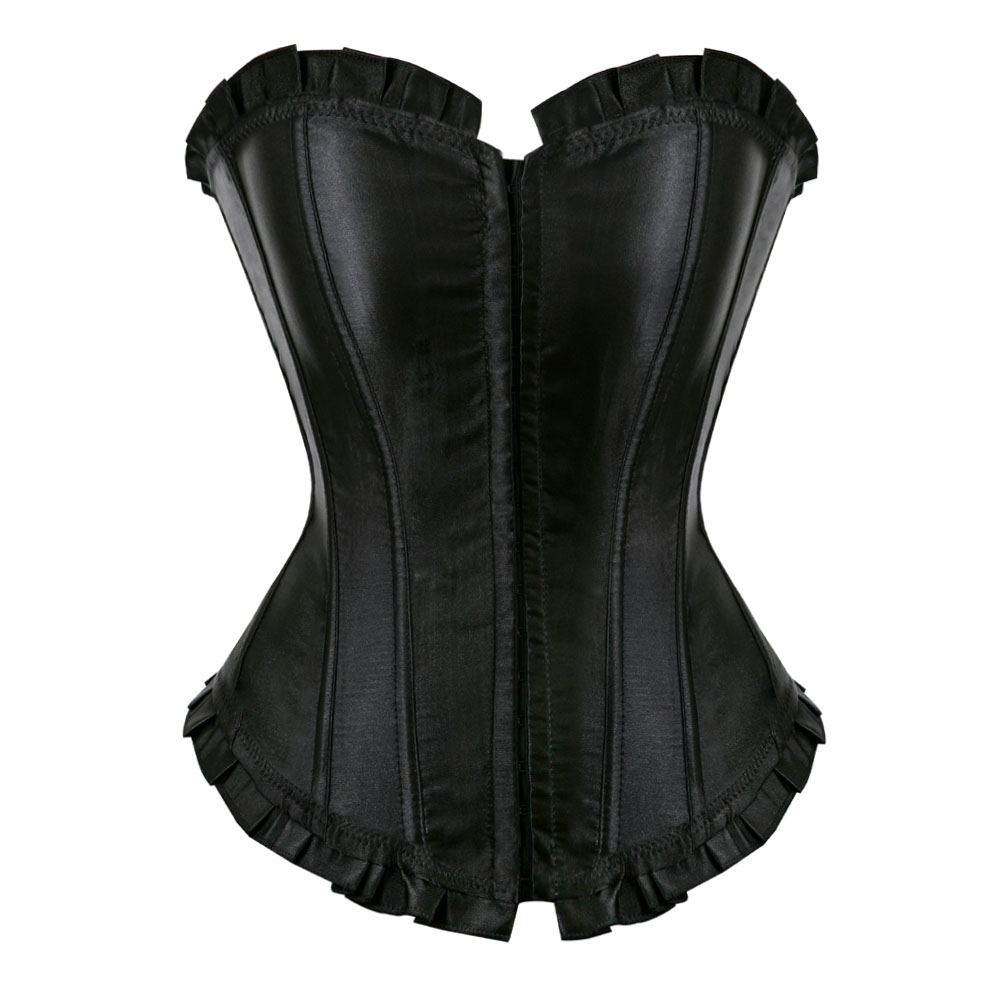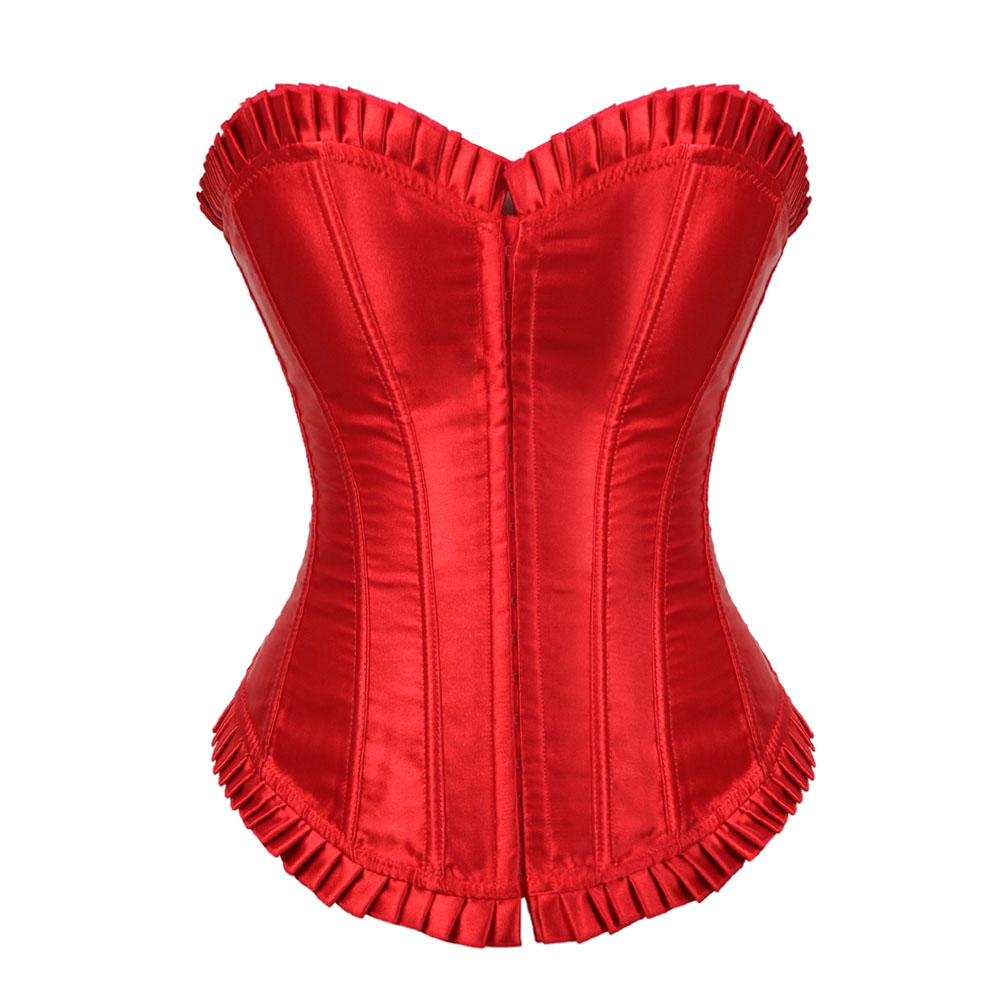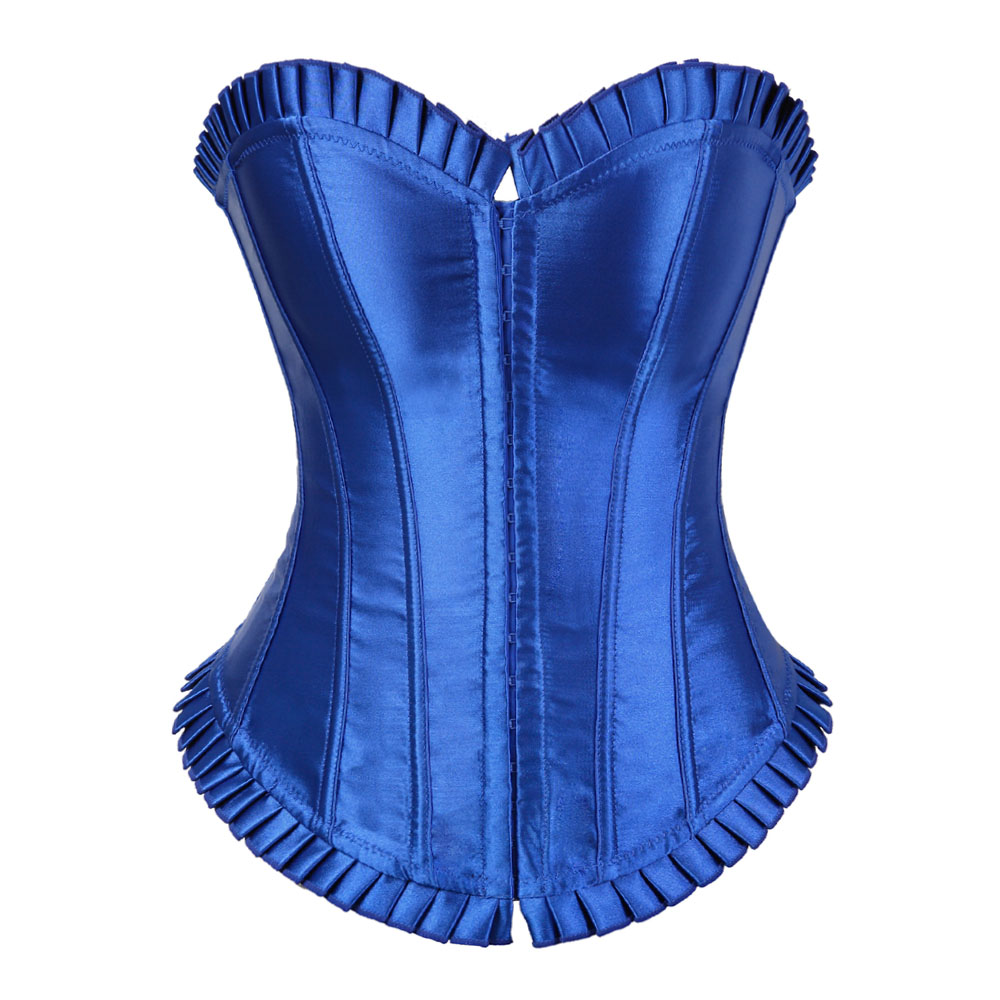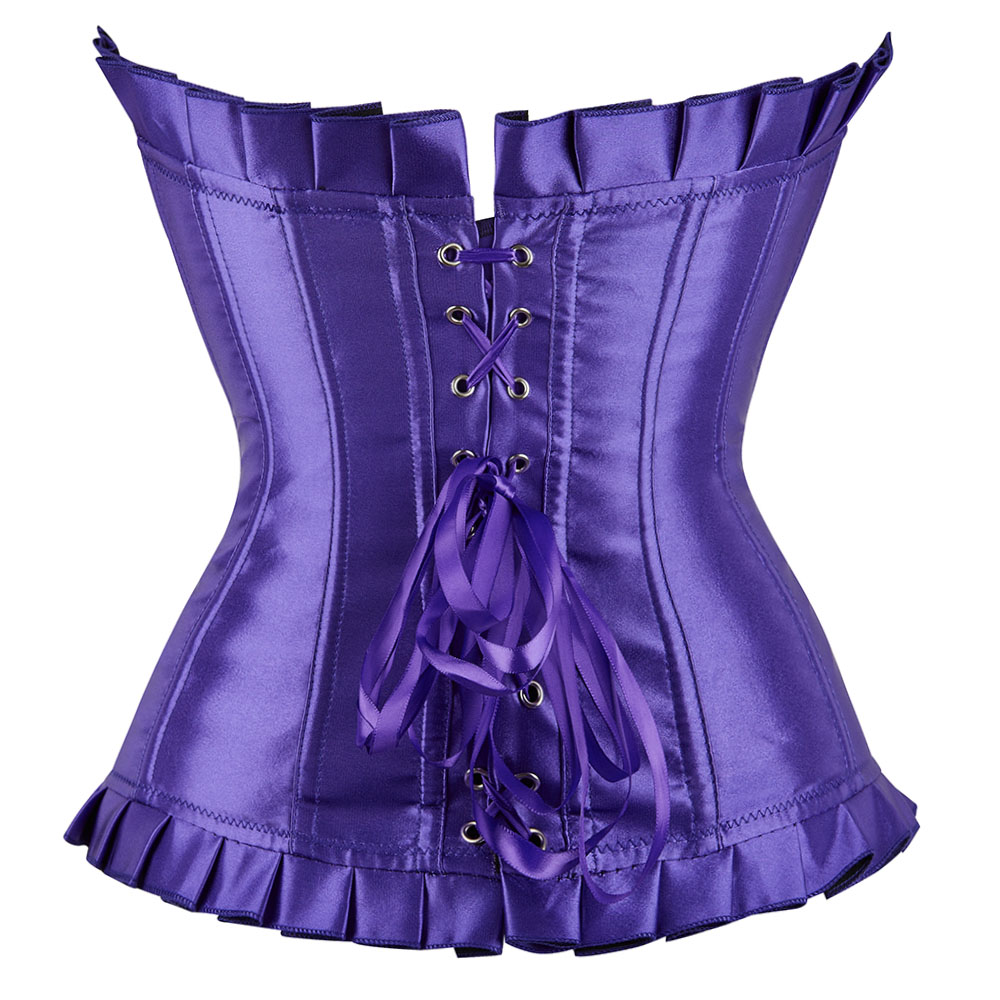Introduction to Corset Lacing
Corset lacing may appear daunting at first, but with the right guidance, it becomes a simple and satisfying task. How to lace up a corset? This introductory section aims to demystify the process, ensuring that even beginners feel confident in their ability to lace a corset properly. We’ll cover the basics of corset lacing, including the types of laces and common lacing patterns. Additionally, understanding the structure of corsets and recognizing various lacing techniques can enhance your corset-wearing experience. Whether for fashion, costuming, or body shaping, mastering the skill of corset lacing offers a blend of historical charm and personal expression. Let’s embark on this journey to ensure you start on the right foot with all the essential knowledge at hand.

Choosing the Right Lacing Material
Choosing the right lacing material is key for optimal corset fitting and comfort. This choice can affect not only how securely your corset fits, but also how easy it is to lace up. Here are essential tips for selecting the ideal lacing material for your corset:
- Strength and Slipperiness: Choose a material that is both strong and slippery. Strong laces withstand tension without breaking, while slippery laces allow for easier tightening. Polyester satin ribbon or nylon braided lacing are excellent choices for their durability and ease of use.
- Length: The length of your lacing depends on the corset’s design. For a corset with a front split busk, 8-10 meters is typically enough. If your corset lacks a busk and requires slipping over the head, you may need double that length.
- Width: Look for laces that are not too wide, as they can be difficult to work through the eyelets. At the same time, avoid very thin laces which can dig into your skin when tightened.
- Textured vs. Smooth: A slightly textured lace can hold knots well but may be less smooth to tighten. Consider your personal preference and comfort when making this choice.
- Tools for the End: For laces that fray, you can use heat-shrink tubing or simply seal them with a clear nail polish to prevent fraying ends.
- Personal Preference: Your choice in laces may also depend on the look you are going for. There is a variety of colors and materials available, so choose one that complements your corset and reflects your style.
Ensure that the laces you select are appropriate for the type of corset you have, and don’t hesitate to ask for recommendations if purchasing from a specialized corsetry supplier. The right material will not only make lacing simpler but also enhance the overall aesthetic of your corset.

Step-by-Step Guide to Lacing Your Corset
Lacing a corset can seem complex, but following a systematic approach will simplify the task. Here’s a clear, concise guide to help beginners lace their corsets effectively:
Starting the Lacing
- Identify the Middle of the Lace: Begin by finding the middle of your corset lace, this is your starting point.
- Attach the Lace: Secure the middle of the lace at the top of the corset’s back, threading it through the top eyelets from the inside to the outside.
Criss-Cross Lacing
- Work Downward: Cross the ends of the lace, and then insert each end into the next eyelet down on the opposite side, alternating this criss-cross pattern as you move downwards.
- Maintain Even Tension: Ensure that you pull the lace ends with equal tension to keep the lacing even on both sides.
Adjusting the Fit
- Adjust as Needed: As you lace down, adjust the fitting by pulling the lace to tighten it or loosening it slightly for a more comfortable fit.
- Check for Symmetry: Periodically stop to make sure that the laces are forming a uniform ‘X’ pattern across the back of the corset.
Securing the Lace
- Reach the Bottom: Once you reach the bottom, thread the lace through the final eyelets.
- Tie Off the Lace: Securely tie the laces in a bow or knot at the bottom.
With these steps, you will be able to lace your corset smoothly and adjust it to fit comfortably and securely.
Methods for Self-Lacing a Corset
Lacing a corset by yourself can be a bit tricky, but with the right method, it’s definitely achievable. Here’s how you can do it without needing an extra pair of hands:
- Start With the Corset Loose: Make sure your corset is fully loosened before you start. This will give you enough slack to work with.
- Wrap Around Your Body: Put the corset around your body and fasten the front busk if your corset has one.
- Find the Middle: Locate the centre of your laces. This will usually be at the back of the waist.
- Work from Top and Bottom: Begin lacing from both the top and the bottom towards the waist. This helps distribute tension evenly.
- Create ‘Bunny Ears’: At the waist, pull out loops to create ‘bunny ears’. These will be your main pulling points to tighten the corset.
- Gradually Tighten: From the waist, gently pull the loops to tighten the corset. Do this slowly to avoid uneven lacing.
- Check for Comfort: Ensure the corset is snug but not too tight. It’s important for your comfort and the corset’s fit.
- Secure the Lacing: Once you’ve achieved the desired tightness, tie the ‘bunny ears’ into a bow. Or, tie the ends if you’ve reached the end of the laces.
With practice, self-lacing will become a quick and simple process. Remember to be patient with yourself while you learn the technique.

Tying and Finishing Your Corset Lacing
Once your corset is fully laced, it’s time to finish and tie it off. Here’s a simple method to ensure your corset is secure and the lacing is complete:
- Inspect Lacing Tension: Before tying off, check the tension of the laces. They should be snug but comfortable.
- Tie a Knot: Start by tying a standard knot at the bottom of the lacing area to secure the lace ends.
- Form a Bow: Create a bow with the remaining lace. Ensure the bow is tight enough to hold but easy to untie.
- Tuck Away Extra Length: If there’s excess lace after the bow, neatly tuck it into the sides of the corset.
- Final Adjustments: Make any final adjustments to ensure the laces are evenly tightened and the fit is precise.
- Smooth Out The Layers: Ensure your undergarment and any modesty panel are flat and smooth under the laces.
By following these steps, your corset lacing will not only look polished but will also maintain the desired silhouette and support throughout wear. Don’t rush the finishing touches; they contribute to both the corset’s function and overall aesthetic.
Adjusting for Comfort and Fit
To ensure your corset is both comfortable and fits well, consider these tips:
- Loosen Before Wearing: Always start by loosening the laces before putting on your corset.
- Fasten from the Top Down: Fasten the busk, starting from the top if your corset has one.
- Align with Body’s Waist: Make sure the corset’s waist aligns with your natural waist for comfort.
- Pull ‘Bunny Ears’ Gently: Use the ‘bunny ears’ loops at the waist to tighten the corset evenly.
- Adjust for Even Tension: Make sure the tension is even on both sides to avoid discomfort.
- Maintain a Comfort Gap: There should be a 2-3 inch gap in the back for breathability.
- Tie Off Securely: Tie the laces securely but ensure you can undo them if needed.
- Listen to Your Body: Never tighten to the point of pain; corsets should not hurt.
- Regular Breaks: Take off the corset if you feel uncomfortable; give your body a break.
Adjusting your corset for comfort and a good fit is crucial for a positive experience. Take your time to get the right fit, and enjoy the beautiful silhouette a well-fitted corset offers.
Advanced Lacing Techniques
When you’ve mastered the basics, it’s time to level up your lacing skills. Advanced techniques can provide a better fit and more comfort. They may seem complex, but with practice, they become second nature. Here are some methods that seasoned corset wearers swear by. Remember to weave these techniques into your routine gradually, as corset wearing should always be a comfortable experience.
The Bunny Ear Method
This popular method involves creating loops or ‘bunny ears’ at the waist. It’s great for self-lacing and allows for easy adjustment. Here’s how:
- Lace to your waist, then pull out extra lace to form loops.
- Use these loops to pull and tighten the corset.
- Tie the ‘bunny ears’ in a bow once the desired tightness is reached.
The Inverted Bunny Ear Method
Similar to the above but with a twist:
- Start as you would with the bunny ear method.
- Instead of tying the loops at the waist, cross them and continue lacing downwards.
- This inverts the loops, keeping them out of the way and providing a neater look.
The X Method
For those seeking an ultra-snug fit:
- Begin with standard criss-cross lacing.
- Tighten each ‘x’ individually for precision control.
- This is ideal for achieving a highly sculpted silhouette.
Single Pull Method
A quick tightening technique:
- Lace your corset with one continuous lace.
- Start pulling from the top to tighten the entire corset at once.
- Secure the end in a bow or knot.
These advanced methods take your corset wearing to the next level. Be patient and allow your body to adapt to these new lacing styles. With the right technique, you can enhance your corset-wearing experience and enjoy both comfort and style.
Caring for Your Corset and Laces
Caring for your corset and laces extends their life and keeps them in good shape. Here are some easy steps to follow:
Washing Your Corset
- Hand wash only: Corsets should be washed gently by hand.
- Use mild soap: A delicate soap is best to avoid damaging the fabric.
- Avoid wringing: Wringing can misshape the steel boning and overall structure.
- Dry flat: Lay the corset flat to dry to retain its shape.
- No machine drying: Avoid using a dryer as it can warp the materials.
Maintaining Your Laces
- Regular checks: Inspect laces for fraying or wear before every use.
- Replace if needed: Switch out laces that show signs of breaking.
- Wash laces separately: Gently wash laces with a light detergent.
- Avoid bleach: Bleaching can weaken laces and cause breakage.
- Dry laces naturally: Let them air dry to prevent shrinkage.
Storing Your Corset
- Keep flat or hung up: Use a hanger to avoid creases or lay flat.
- Away from direct sunlight: Protect the fabric from fading.
- Use a garment bag: Store in a bag to shield from dust.
With these simple care tips, your corset and laces will last longer and stay pristine.
